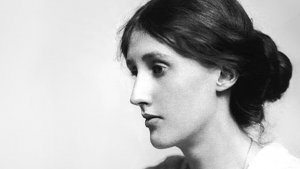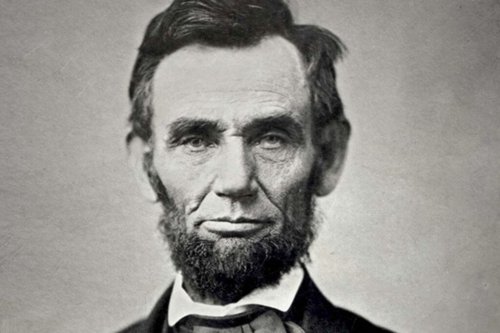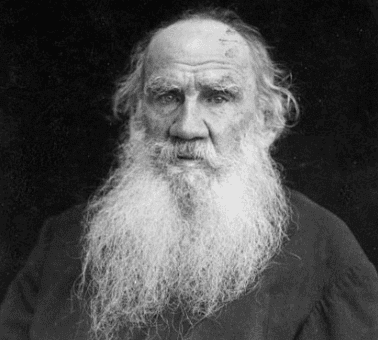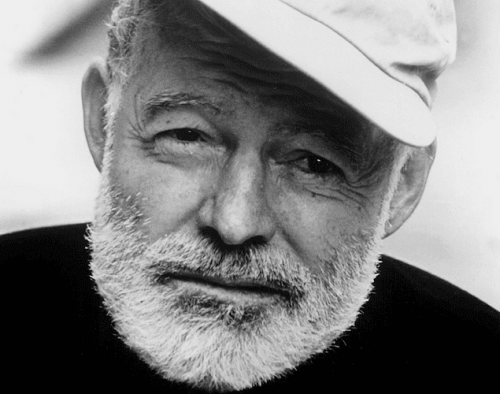Depression in Historical Figures

Many historical figures suffered from depression. However, this condition didn’t keep them from pursuing their dreams and achieving many of their goals. In fact, they had great powers of observation and could enlighten others despite living in darkness.
Continue reading to learn about how some of these historical figures with depression were able to extract the strength, motivation, and energy necessary to leave their mark on society.
Depression in historical figures
1. Abraham Lincoln (1809-1865)
Abraham Lincoln, the 16th President of the United States of America, battled with depression his entire life. At the time, people believed this mood disorder was mere melancholy and it’s just how his peers described him, as “a highly melancholic person with a hardened expression”. However, this disorder gave him the courage to become one of the most emblematic figures of the American Civil War.
Sometimes, Lincoln’s depression manifested with panic attacks, especially since he began practicing law in Illinois. Nobody knows for sure, but those who studied his family tree claim that the Lincoln family was prone to depression. They think that what triggered a huge period of depression for Lincoln was the death of his sister, as he loved her dearly.

2. Edgar Allan Poe (1809-1849)
The renowned writer of horror stories suffered from depression and alcoholism. His inspiration for many of his stories was the tragic experiences that marked his life. He was also a victim of constant nightmares and hallucinations. They persisted throughout his life. In fact, French poet Charles Baudelaire wrote that Poe was marked by innate misfortune.
His father left his family when he was one year old and his mother died of tuberculosis shortly after. Poe and his brothers were orphaned. Thus, his grandparents adopted his older brother and he and his younger sister were adopted by two married couples.
Edgar studied at one of the best schools in the United States. He showed signs of his great ability as a writer from an early age. Also, he displayed impulsive behaviors and an irritable attitude along with excessive alcohol consumption. In fact, alcoholism and other drugs triggered his early death at age 40.
However, the deep states of depression and mood fluctuations led him to extreme creativity. For this reason, he could spend hours and hours writing, according to sources.
3. Charles Dickens (1812-1870)
Dickens is one of the greatest English writers of all time. Some of his best-known works are Oliver Twist and A Christmas Carol.
Charles Dickens had a very happy public life but a rather unhappy personal life, due to his depression. Some of his acquaintances claimed that deep sadness invaded him from time to time.
4. Leo Tolstoy (1828-1910)
This Russian writer and critic dealt with severe depression later in his life, according to research by various psychologists and psychiatrists.
After writing War and Peace, he plunged into a period of deep depression and hit rock bottom by the time he finished writing Anna Karenina. According to his family and friends, he often thoughts about dying and the possibility that there’s nothing after death. Sometime before he died of pneumonia, he decided to live as a beggar on the streets.

5. Winston Churchill (1874-1965)
British Prime Minister Winston Churchill referred to his depression as “the black dog”. However, his family doctor diagnosed his disorder upon learning and analyzing his depressive periods, manias, suicidal thoughts, and insomnia.
Churchill spoke openly about his depressive condition. In many of the letters and articles he wrote, he described how light faded and darkness reigned at certain periods of his life. He also went on to explain how he dealt with his depression through creative endeavors such as writing, painting, and DIY.
6. Virginia Woolf (1882–1941)
She was the most outstanding writer of the 20th century. According to the diagnosis of various psychologists, Wolf suffered from depression and bipolar disorder. You can appreciate this side in her literary work and in some of her letters. In fact, it led her to psychiatric internment on several occasions.
According to some investigations, the times in which she experienced the strongest crises coincided with the end of her novels. However, her mood started deteriorating after the deaths of her mother, sister, and father two years later.
Virginia Woolf constantly battled depression and committed suicide on March 28, 1941. She went into the Ouse River wearing a coat full of stones.
7. Ernest Hemingway (1899-1961)
This eccentric writer suffered from depression according to some historians. Subsequently, he was also diagnosed with bipolar disorder and narcissism.
Due to his severe depression, Hemingway tried to recover with electroshock therapy, but it merely led to a significant cognitive deterioration that made it difficult for him to write. Similarly, he also resorted to alcohol to mitigate his suffering. This situation prompted him to commit suicide in 1961, at the age of 61.

8. Martin Luther King, Jr. (1929-1968)
This passionate political leader defended civil rights all of his life. However, he also suffered depression from a very young age. He experienced several depressive episodes as a teenager. In fact, he attempted suicide twice after his grandmother died.
Also, he suffered some depressive episodes when he was a political activist. However, he opposed psychiatric help at all times.
In conclusion, all of these historical figures with depression changed the world in some way. Ernest Hemingway, Virginia Woolf, Leo Tolstoy, Charles Dickens, and Edgar Allan Poe did so through literature. In turn, Martin Luther King Jr., Winston Churchill, and Abraham Lincoln from a political standpoint.
Many historical figures suffered from depression. However, this condition didn’t keep them from pursuing their dreams and achieving many of their goals. In fact, they had great powers of observation and could enlighten others despite living in darkness.
Continue reading to learn about how some of these historical figures with depression were able to extract the strength, motivation, and energy necessary to leave their mark on society.
Depression in historical figures
1. Abraham Lincoln (1809-1865)
Abraham Lincoln, the 16th President of the United States of America, battled with depression his entire life. At the time, people believed this mood disorder was mere melancholy and it’s just how his peers described him, as “a highly melancholic person with a hardened expression”. However, this disorder gave him the courage to become one of the most emblematic figures of the American Civil War.
Sometimes, Lincoln’s depression manifested with panic attacks, especially since he began practicing law in Illinois. Nobody knows for sure, but those who studied his family tree claim that the Lincoln family was prone to depression. They think that what triggered a huge period of depression for Lincoln was the death of his sister, as he loved her dearly.

2. Edgar Allan Poe (1809-1849)
The renowned writer of horror stories suffered from depression and alcoholism. His inspiration for many of his stories was the tragic experiences that marked his life. He was also a victim of constant nightmares and hallucinations. They persisted throughout his life. In fact, French poet Charles Baudelaire wrote that Poe was marked by innate misfortune.
His father left his family when he was one year old and his mother died of tuberculosis shortly after. Poe and his brothers were orphaned. Thus, his grandparents adopted his older brother and he and his younger sister were adopted by two married couples.
Edgar studied at one of the best schools in the United States. He showed signs of his great ability as a writer from an early age. Also, he displayed impulsive behaviors and an irritable attitude along with excessive alcohol consumption. In fact, alcoholism and other drugs triggered his early death at age 40.
However, the deep states of depression and mood fluctuations led him to extreme creativity. For this reason, he could spend hours and hours writing, according to sources.
3. Charles Dickens (1812-1870)
Dickens is one of the greatest English writers of all time. Some of his best-known works are Oliver Twist and A Christmas Carol.
Charles Dickens had a very happy public life but a rather unhappy personal life, due to his depression. Some of his acquaintances claimed that deep sadness invaded him from time to time.
4. Leo Tolstoy (1828-1910)
This Russian writer and critic dealt with severe depression later in his life, according to research by various psychologists and psychiatrists.
After writing War and Peace, he plunged into a period of deep depression and hit rock bottom by the time he finished writing Anna Karenina. According to his family and friends, he often thoughts about dying and the possibility that there’s nothing after death. Sometime before he died of pneumonia, he decided to live as a beggar on the streets.

5. Winston Churchill (1874-1965)
British Prime Minister Winston Churchill referred to his depression as “the black dog”. However, his family doctor diagnosed his disorder upon learning and analyzing his depressive periods, manias, suicidal thoughts, and insomnia.
Churchill spoke openly about his depressive condition. In many of the letters and articles he wrote, he described how light faded and darkness reigned at certain periods of his life. He also went on to explain how he dealt with his depression through creative endeavors such as writing, painting, and DIY.
6. Virginia Woolf (1882–1941)
She was the most outstanding writer of the 20th century. According to the diagnosis of various psychologists, Wolf suffered from depression and bipolar disorder. You can appreciate this side in her literary work and in some of her letters. In fact, it led her to psychiatric internment on several occasions.
According to some investigations, the times in which she experienced the strongest crises coincided with the end of her novels. However, her mood started deteriorating after the deaths of her mother, sister, and father two years later.
Virginia Woolf constantly battled depression and committed suicide on March 28, 1941. She went into the Ouse River wearing a coat full of stones.
7. Ernest Hemingway (1899-1961)
This eccentric writer suffered from depression according to some historians. Subsequently, he was also diagnosed with bipolar disorder and narcissism.
Due to his severe depression, Hemingway tried to recover with electroshock therapy, but it merely led to a significant cognitive deterioration that made it difficult for him to write. Similarly, he also resorted to alcohol to mitigate his suffering. This situation prompted him to commit suicide in 1961, at the age of 61.

8. Martin Luther King, Jr. (1929-1968)
This passionate political leader defended civil rights all of his life. However, he also suffered depression from a very young age. He experienced several depressive episodes as a teenager. In fact, he attempted suicide twice after his grandmother died.
Also, he suffered some depressive episodes when he was a political activist. However, he opposed psychiatric help at all times.
In conclusion, all of these historical figures with depression changed the world in some way. Ernest Hemingway, Virginia Woolf, Leo Tolstoy, Charles Dickens, and Edgar Allan Poe did so through literature. In turn, Martin Luther King Jr., Winston Churchill, and Abraham Lincoln from a political standpoint.
All cited sources were thoroughly reviewed by our team to ensure their quality, reliability, currency, and validity. The bibliography of this article was considered reliable and of academic or scientific accuracy.
- Froján, M. X. (2006). Tratando… depresión: Guía de actuación para el tratamiento psicológico. Madrid: Pirámide.
- Montes, J. M. G., & Álvarez, M. P. (2003). Guía de tratamientos psicológicos eficaces para la depresión. In Guía de tratamientos psicológicos eficaces (pp. 161-196). Ediciones Pirámide.
- Montón, C., Pérez Echeverría, M. J., Campos, R., García Campayo, J., & Lobo, A. (1993). Escalas de ansiedad y depresión de Goldberg: una guía de entrevista eficaz para la detección del malestar psíquico. Aten Primaria, 345-9.
- Ruiloba, J. V., & Ferrer, C. G. (2000). Trastornos afectivos: ansiedad y depresión. Elsevier España.
- Wolf Shenk, Joshua (2006). Lincoln’s Melancholy: How Depression Challenged a President and Fueled His Greatness. Boston: Mariner Books.
This text is provided for informational purposes only and does not replace consultation with a professional. If in doubt, consult your specialist.







